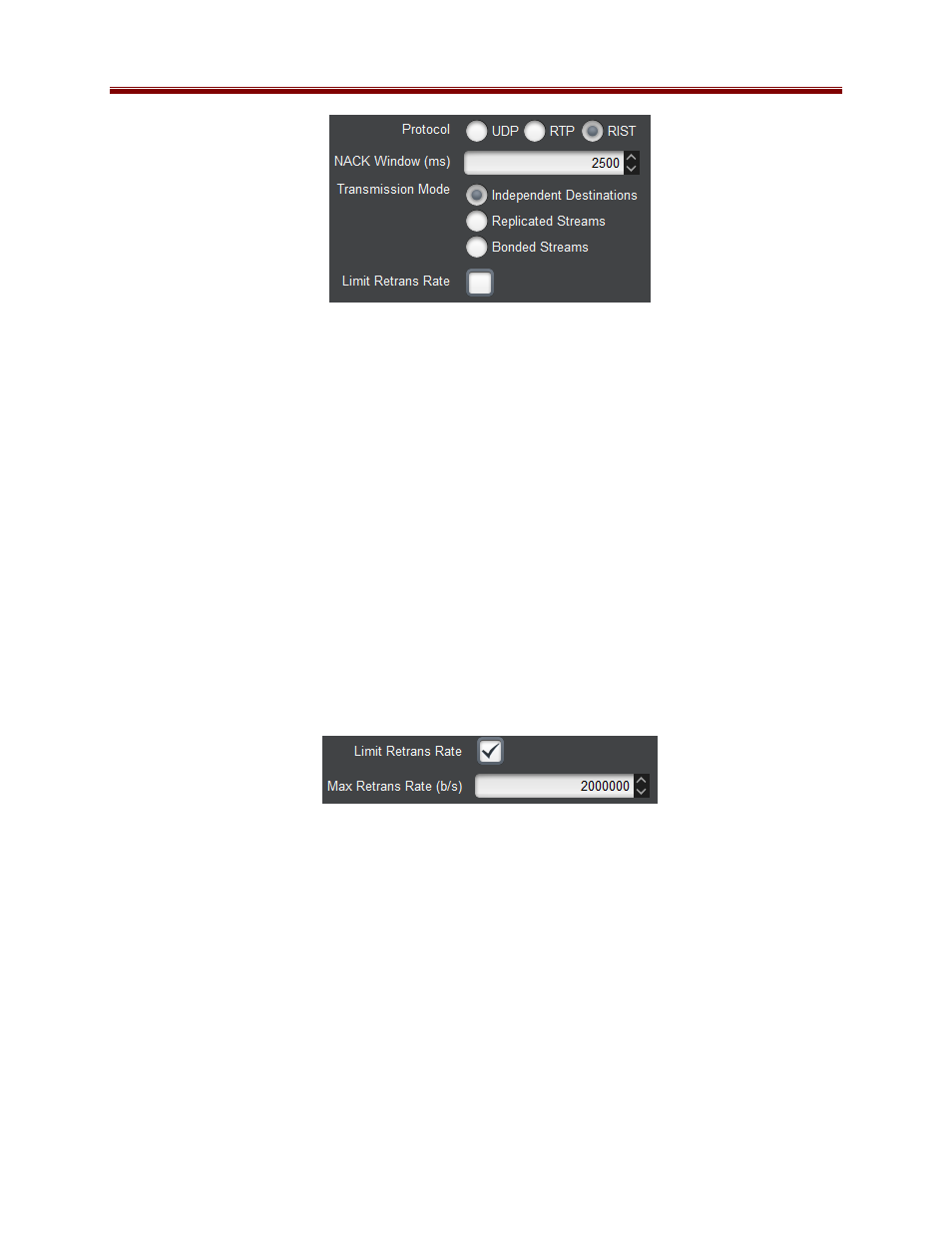Cobalt Co9992-4ENC-4K-HEVC Software-Defined Broadcast Encoder User Manual
Page 59

59
The RIST configuration is:
NACK Window (ms):
specify how long the encoder should buffer transmitted packets in
expectation of retransmission requests. The exact number does not matter much; a value
in the order of 5000 milliseconds should cover most cases.
Transmission Mode:
this parameter controls how the encoder handles multiple
destinations. The options are:
o
Independent Destinations:
The encoder treats each destination enabled under
Stream Destinations
as an independent receiver. Retransmission requests will be
independently handled per destination.
o
Replicated Streams:
The encoder assumes that it is sending multiple copies of the
stream to the same receiver, to implement SMPTE-2022-7 Seamless Switching.
Retransmissions may not be sent over the same destinations as the requests.
o
Bonded Streams:
The encoder splits the streams equally over the configured
destinations. For example, if there are three destinations, each will get 1/3 of the
packets. It is assumed that all destinations correspond to the same receiver, and the
receiver will re-order the packets prior to consuming them.
Limit Retrans Rate:
if this box is checked, the retransmission rate is limited. A new
parameter becomes available, where the maximum retransmission rate can be entered.
Stream Destinations:
up to 4 stream destinations can be configured. They will all receive the
same content and share the same NACK window if RIST is enabled. The destination parameters
are:
Enable:
check this box to enable transmission to this particular destination.
Destination:
enter the destination IP address.
UDP Port:
enter the destination UDP port. In RIST and RTP modes, this UDP port must
be an even number. Odd numbers will not be accepted in the GUI.
Interface:
select the desired streaming interface. RIST tunnels defined in the Network
Configuration RIST Tunnels Tab can also be selected here.
TTL:
select the desired Time-To-Live for the packets. The TTL value specifies how
many routers the packet can cross before being dropped.
TOS:
enter the value of the Type-Of-Service (TOS) field in the IP header, if desired,
between 0 and 255. The upper 6 bits of field are also known as the DSCP (Differentiated
